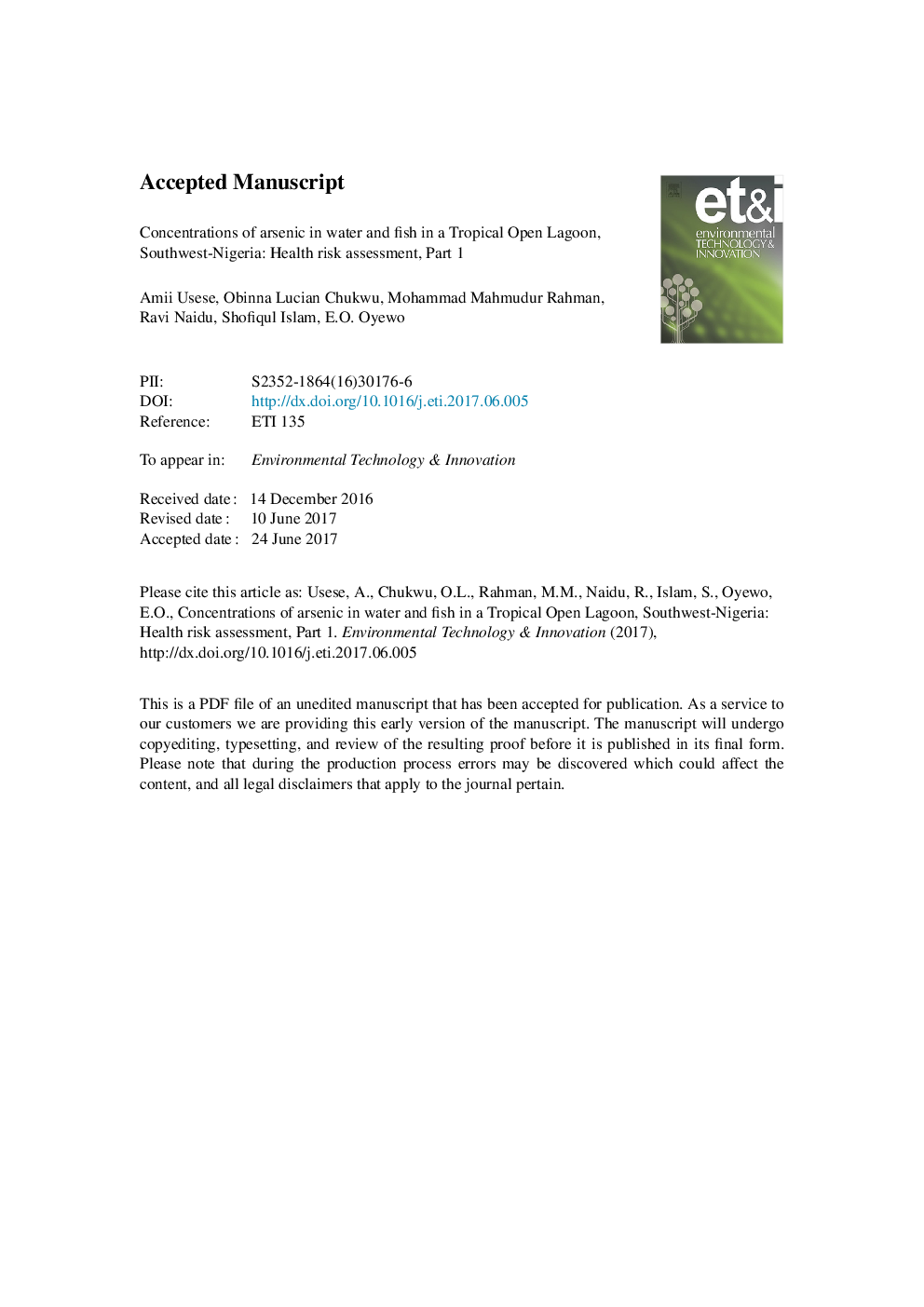| Article ID | Journal | Published Year | Pages | File Type |
|---|---|---|---|---|
| 5749601 | Environmental Technology & Innovation | 2017 | 26 Pages |
Abstract
This study assesses the concentrations of arsenic (As) in water, muscle tissue of four demersal fish species (Chrysichthys nigrodigitatus, Mugil cephalus, Liza falcipinnis and Bathygobious soporator) and whole tissues of periwinkle (Tympanotonus fuscatus) in Lagos Lagoon, Nigeria. The observed mean total As concentration in water (1.29μglâ1) during the wet and dry seasons did not exceed the World Health Organization (WHO) guideline value of 10μglâ1. Among the examined biota, Tympanotonus fuscatus recorded higher As levels (2.31±0.24mgkgâ1) and Chrysichthys nigrodigitatus recorded the least As content (0.67±0.08mgkgâ1). A significant positive correlation (p<0.05) was observed between As concentrations in fish muscles and water during the dry and wet seasons. The health risks associated with human consumption of fish estimated using Target Hazard Quotient (THQ) were lower than the USEPA guideline value of 1 for all fish species examined except in populations that consume larger amounts of fish. However, higher THQ values (>2) were obtained for Tympanotonus fuscatus, suggesting the potential for non-carcinogenic health outcomes in adults after a prolonged period of consumption. This calls for continuous monitoring and enforcement of regulations to ensure safety of fishery resources from Lagos Lagoon.
Keywords
Related Topics
Life Sciences
Environmental Science
Environmental Chemistry
Authors
Amii Usese, Obinna Lucian Chukwu, Mohammad Mahmudur Rahman, Ravi Naidu, Shofiqul Islam, Emmanuel Olusegun Oyewo,
